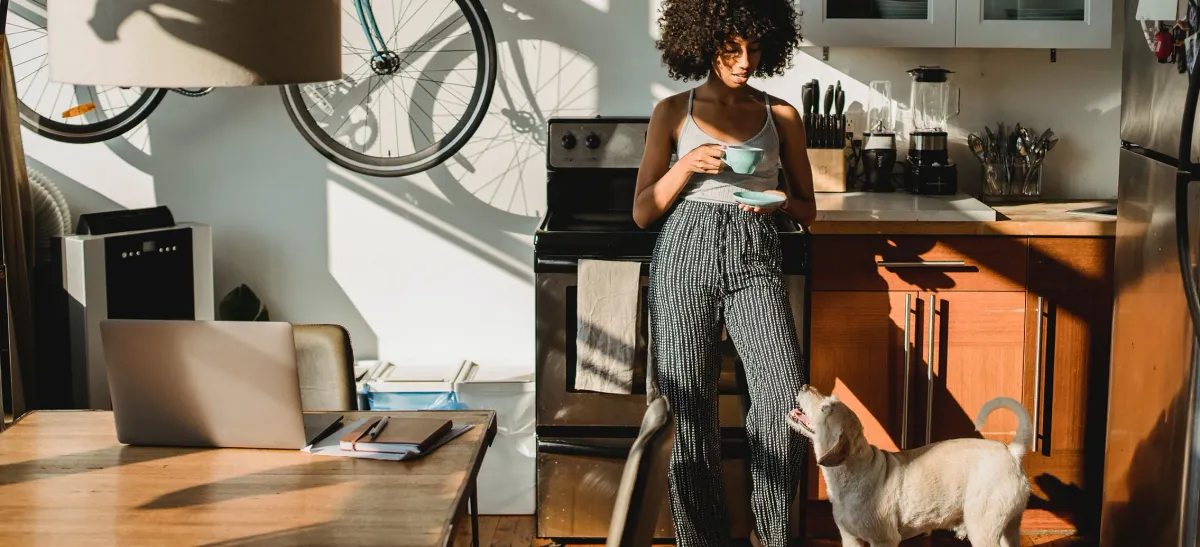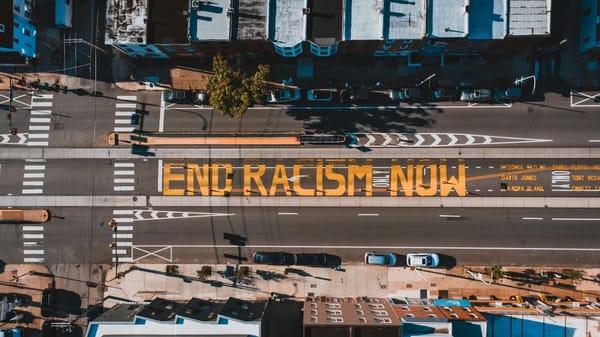How to Navigate Climate Change During a Cost-of-living Crisis: What It Really Means to Live Sustainably
Six things you can do at home that are better for your health, your wallet, and the environment.

Access the Audio Read version of this article directly on Spotify for Podcasters.
Between the current climate crisis, the pandemic, and the cost-of-living crisis looming over us, living more sustainably is no longer optional: it is vital. But how do you make sense of all the advice, avoid climate anxiety, manage your spending, and most of all, how do you stay hopeful these efforts are not in vain?
We asked the experts at Vitæ, the award-winning agri-tech company aiming to reinvent urban agriculture, starting with your kitchen.
The company was founded by Isaac Conrad McNamara and Arthur Georges, two King’s College London alumni and entrepreneurs passionate about innovation and sustainability, with the dream that people should be able to access fresh and tasteful food anywhere.
Their indoor gardens help fix our reliance on agriculture, which is currently the second most polluting industry in the world. Knowing that half of the world’s food is wasted makes the agricultural issue even more alarming.
Here’s the ultimate guide to a more sustainable life, with the Vitæ team’s advice on doing what you can from home, and managing both your finances and food waste while remaining healthy.
1) In the current crisis, it can be easy to get lost in a sea of information, so what is the first thing people should do to live more sustainably?
Usually, simple and small changes can make a massive difference when it comes to living a more sustainable life. The only downside is that in a lot of cases, this can be quite a bit of work when the opportunities to do this are not available.
Starting in the kitchen and your pantry is a great way to make small changes which can have lasting impacts. For example, in many cities and larger towns, you can now go to stores where you can fill up jars, weigh your pasta, grains, and cereals and pay for what you need. This way, you can avoid using single-use plastic containers and also not overspend on stuff you don’t need. This is the same for many products like vegetables, fruits, seeds, and much more.
However, the issue with herbs is that they always come in plastic packaging or as a full plant, which usually dies before you can even use them up. This means that even if you want to use fresh herbs, you can’t sustainably get them. Some stores are combatting this, but not at the needed rate. Products like an indoor garden allow you to grow them at home so you can use what you need when you need it.
Some quick ways to make your home more sustainable and the companies who can help you in this process include:
- Stop using plastic dishwasher tablets and swap to sustainable alternatives such as Smol
- Swap to eco washing up and cleaning products like Ocean Saver
- Check out zero plastic shops such as Gather or Shop without Packaging
- Shop every few days and buy in smaller, simple ways. (50% of household food is wasted by going bad, so buy what you need)
2) What should be the priority in order to live a healthier life within the constraints of a tight budget?
Being sustainable on an individual level and on a corporate level can save you money in a very significant way. Shopping for what you need in small quantities with quality produce allows you to avoid wasting food and making the most of the food you have, with benefits for your health and finances.
Planning your meals can make a massive difference in this way. Having meals which are 3-4 ingredients can help you to eat better and save more money. Shopping regularly and locally can help in a period of financial instability.
One problem with organic produce is that a lot of it is still imported, and in this case a lot of preservatives are used to keep this fresh. So, in many cases, shopping literally locally and in season is so much better for you and also can save a lot of money.
3) What is the one thing that people get wrong about climate change?
There is a massive misconception with a lot of people when it comes to where and how climate change is impacting the planet. Many different industries are causing large issues, but agriculture is the second most polluting industry, and this is a very confusing space for many to get a hold of.
Half of the agricultural industry’s emissions come from transportation. Produce takes an average of 21 days from the moment your food is harvested to the moment it arrives on your plate. 21 days during which your food loses on average 60% of its taste and nutritional value. Therefore, this industry has become not only inefficient, but the produce provided is also ineffective and there is a need for this to change. Farming needs to become a service, more innovative and more local.
Here are some key facts to keep in mind:
- Only 12% of the world’s land can be used for farming
- Farming uses 70% of the world’s fresh water
- Agriculture, forestry, and other land use causes 23% of greenhouse gases
4) What changes can you expect when you switch to growing your own food, and how long does it take to see the difference in your health and wallet?
The major difference is usually your energy levels and habits. Having fresh herbs in your diet which are picked directly from the source allows you to reap the benefits of all different types of herbs which are usually muted from the long time they have been harvested for.
The biggest part of this is redefining what fresh means to you. The taste of your herbs is unmatched as they are being harvested directly from the source. When you grow herbs, you can wait to cut them until right when you need them. That means never worrying about the basil and parsley getting dried out and brittle before you have the chance to put it to work.
With food, it is the same for herbs. If you use it when you need it instead of buying in bulk, your herbs will last longer and will stay fresher. This means you can stretch their lifetime which is a great return on investment. This is a major mindset change but in the long run, sustainable buying habits and growing at home will make not only a health difference but a financial one.
5) If tech and AI are agents of change and can help alleviate the climate crisis, what accessible tech should we invest in, and why is it important in the long run?
With the rise in innovation, the changes in how and what we eat are going to be a major part of this. As the agricultural industry is the second most polluting in the world, the carbon crisis will cause places we are already growing to become barren and therefore major innovations will be needed to keep up food demand. Not to mention the population is expected to rise by 20% by 2030.
As such, food will get more expensive as countries will have to import more of their produce whilst also spending significantly more on setting up new growing facilities to try and meet present and future demands.
A key example of this is the Dutch tomato crisis. Skyrocketing power prices are forcing the vast network of Dutch glasshouses (the continent’s biggest) to go dark or scale back, threatening to cut supplies at Europe’s fruit and vegetable stalls and flower shops. Although small, the Netherlands is the world’s second-largest exporter of food by value, thanks in part to its high-yielding glasshouses that span some 10,000 hectares (25,000 acres), about the size of Paris. Agriculture needs a change by making it local, changing eating habits and allowing people to grow at home!
Investment can be quite high to completely move to growing at home but as agriculture starts to rise in costs, doing this will allow you to save money in the long run. Making small changes like growing your herbs from home will allow you to make sustainable changes, which will pay off in the future.
6) How much of the climate burden can an individual take on? Who does it fall onto really for changes to be made?
When it comes to the climate crisis, there is only so much you can do to make a change. What is needed is the implementation of feasible systems, which makes sustainable solutions more accessible.
This is where start-ups come in. With the innovation in sectors, people will have access to alternatives which allow them to live a more sustainable life. A good and very old example of this is dishwashers. Dishwashers, if used effectively, can save more water than washing up normally. This innovative change to households allowed people to save money on their water bill and indirectly allowed them to waste less water.
The need for innovation and change to not only be financially viable and sustainable falls onto businesses. Companies need to follow trends, and luckily trends are moving towards sustainability. The value of the “green economy” is even projected to grow beyond $90 trillion by 2030. As such, companies will want to be a part of this, but start-ups will work to make the most innovative solutions, which will find lasting solutions to shape our future.
Individuals need to ask for what they want, email companies, and directly get them to make a change. Alternatives are only the best when they save money, but let’s make it clear that these are needed for both environmental and financial sustainability.





